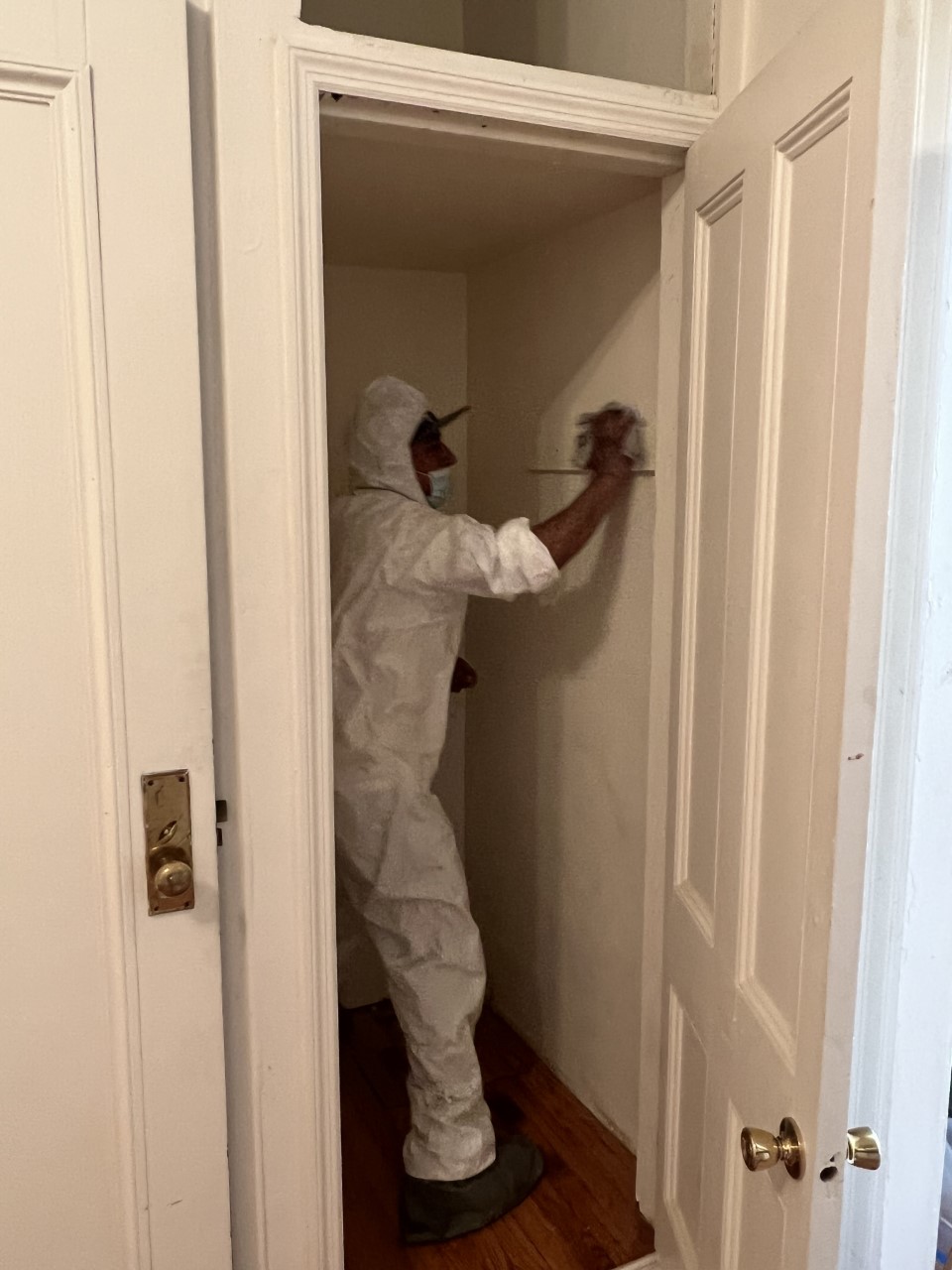Vital Devices and Methods for Efficient Lead Offense Clean-up
Addressing lead offenses effectively requires a comprehensive technique that mixes the right tools with calculated methodologies. Concurrently, the usage of specialized cleaning tools, such as HEPA vacuum cleaners and lead-specific cleansing agents, is crucial for comprehensive pollutant elimination. Effective containment approaches, including plastic sheet and unfavorable air stress systems, are vital to stop the spread of unsafe materials.
Personal Protective Devices
Personal protective equipment (PPE) is a crucial component in the effective management of lead contamination cleaning. The crucial PPE for lead cleaning consists of respirators, safety clothes, gloves, and eye protection.
Respirators, especially those outfitted with HEPA filters, are crucial for filtering system airborne lead particles, protecting against inhalation. Safety garments, including coveralls and non reusable suits, protects against lead dust from sticking to workers' garments, lowering the danger of second contamination.
Additionally, rigorous training on the right usage and upkeep of PPE is essential. Employees must be informed on donning and doffing treatments to stay clear of contamination. Routine examinations and replacements of PPE parts are necessary to preserve their safety capabilities, making certain a secure and certified cleanup procedure.
Specialized Cleaning Equipment

One more essential tool is the wet/dry vacuum cleaner, which can effectively clean up both dirt and fluid contaminants. These vacuums commonly come with HEPA filters to offer an extra layer of safety and security. Wet wipes or tack fabrics are additionally crucial for surface cleaning; they are especially made to capture and hold lead particles, minimizing the threat of spreading out contamination.
For even more stubborn deposits, specialized lead-removal cleaner are needed. These agents are developed to damage down lead fragments, making them less complicated to remove. Scrub brushes with sturdy bristles can aid in this process, particularly on rough surfaces where lead dust has a tendency to adhere a lot more highly.
Furthermore, encapsulants are utilized to secure lead-contaminated surface areas, stopping the launch of lead dirt. These specialized paints and layers are made to follow various substrates, offering a long-term service for lead containment.
Effective Containment Methods
Reliable control approaches are critical in minimizing the spread of lead contamination throughout clean-up activities. Executing robust control approaches makes certain that lead fragments do not move to untouched areas, thus protecting both employees and the setting. One main method is making use of plastic bed linen to secure off polluted zones. Sturdy polyethylene obstacles can be set up from floor to ceiling to produce a controlled workspace, dramatically minimizing the danger of airborne lead dirt dispersal.

To enhance control, encapsulants can be put on surface areas that are not being eliminated or disturbed. These specialized finishes bind lead dust, lowering its accessibility for resuspension. In addition, all workers must use appropriate Personal Safety Devices (PPE), consisting of respirators and disposable matches, to stop contamination spread.
Safe Disposal Practices
Making certain risk-free disposal techniques is an important component in the administration of lead contamination cleaning. Proper disposal minimizes the risk of lead returning to the setting and about his endangering public health and wellness. The first step is to recognize and set apart lead-contaminated waste from various other materials. Safe and secure control making use of sturdy, leak-proof containers is important to stop spillage throughout transportation.
Transporting lead waste requires adherence to stringent guidelines. Utilizing accredited contaminated materials carriers guarantees that the materials are dealt with properly. Paperwork, consisting of materializes outlining the type and quantity of waste, ought to accompany shipments to track the waste from the site of origin to its final disposal destination.
Designated contaminated materials disposal facilities are equipped to handle lead-contaminated materials safely. These centers often use innovative approaches such as stablizing, solidification, or chemical therapy to reduce the effects of the lead before disposal. Landfilling in specialized, lined areas that prevent leachate from contaminating groundwater is an usual technique for last disposal.
Routine training for workers involved in lead garbage disposal is critical to keep security standards and prevent accidental direct exposure. By adhering to these practices, companies can substantially minimize the environmental and wellness effects connected with lead contamination.
Regulatory Compliance Tips

Sticking to regulative compliance is extremely important in the successful implementation of lead contamination clean-up. Understanding and adhering to federal, state, and neighborhood policies ensures not only the safety and health and wellness of individuals however also the lawful and financial wellness of the cleanup organization. The Environmental Protection Company (EPA) establishes strict criteria, such as the Lead Remodelling, Fixing, and Painting (RRP) Regulation, which mandates proper qualification and training for contractors managing lead-based activities.
Compliance begins with a complete analysis of applicable legislations and guidelines. Organizations has to stay updated on any link legislative changes, which can be helped with via routine training sessions and registering for sector updates. Documentation is another vital conformity element; keeping thorough documents of all tasks, consisting of inspection reports, employee training logs, and disposal manifests, is important.
Furthermore, engaging with accredited lead examiners or run the risk of assessors guarantees that lead risks are properly determined and reduced. Employers should enforce using Personal Safety Tools (PPE) and make sure that security procedures are strictly followed. Lastly, clear interaction with stakeholders, including employees, clients, and governing bodies, will cultivate a culture of compliance and original site accountability, inevitably adding to a much safer and much more efficient lead cleaning process.
Final Thought
Effective lead offense cleanup requires the assimilation of specialized tools and tactical techniques to ensure security and effectiveness. Individual protective equipment (PPE) safeguards workers from direct exposure, while secure disposal practices and stringent adherence to regulative conformity are essential for responsibly handling harmful waste.